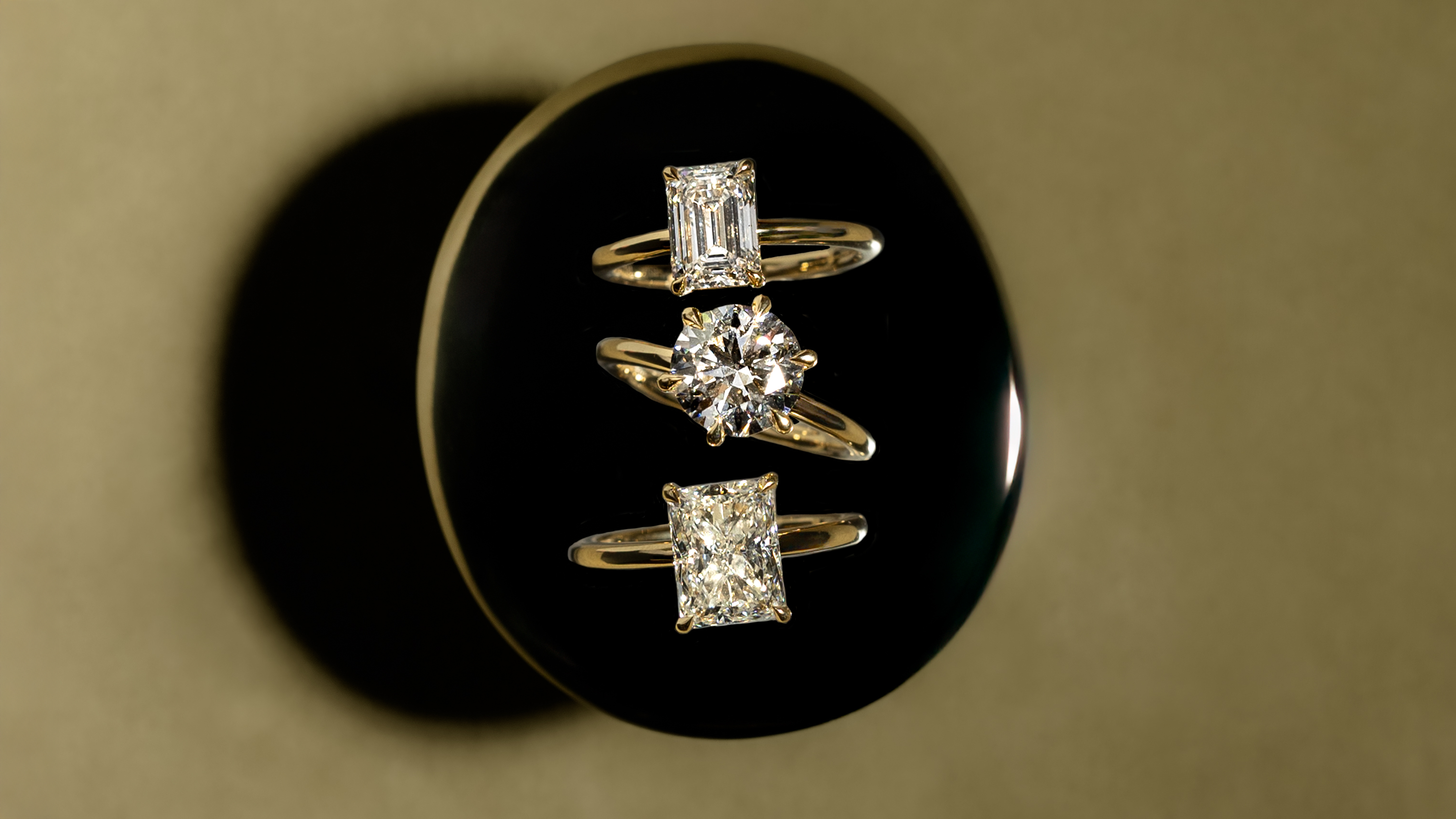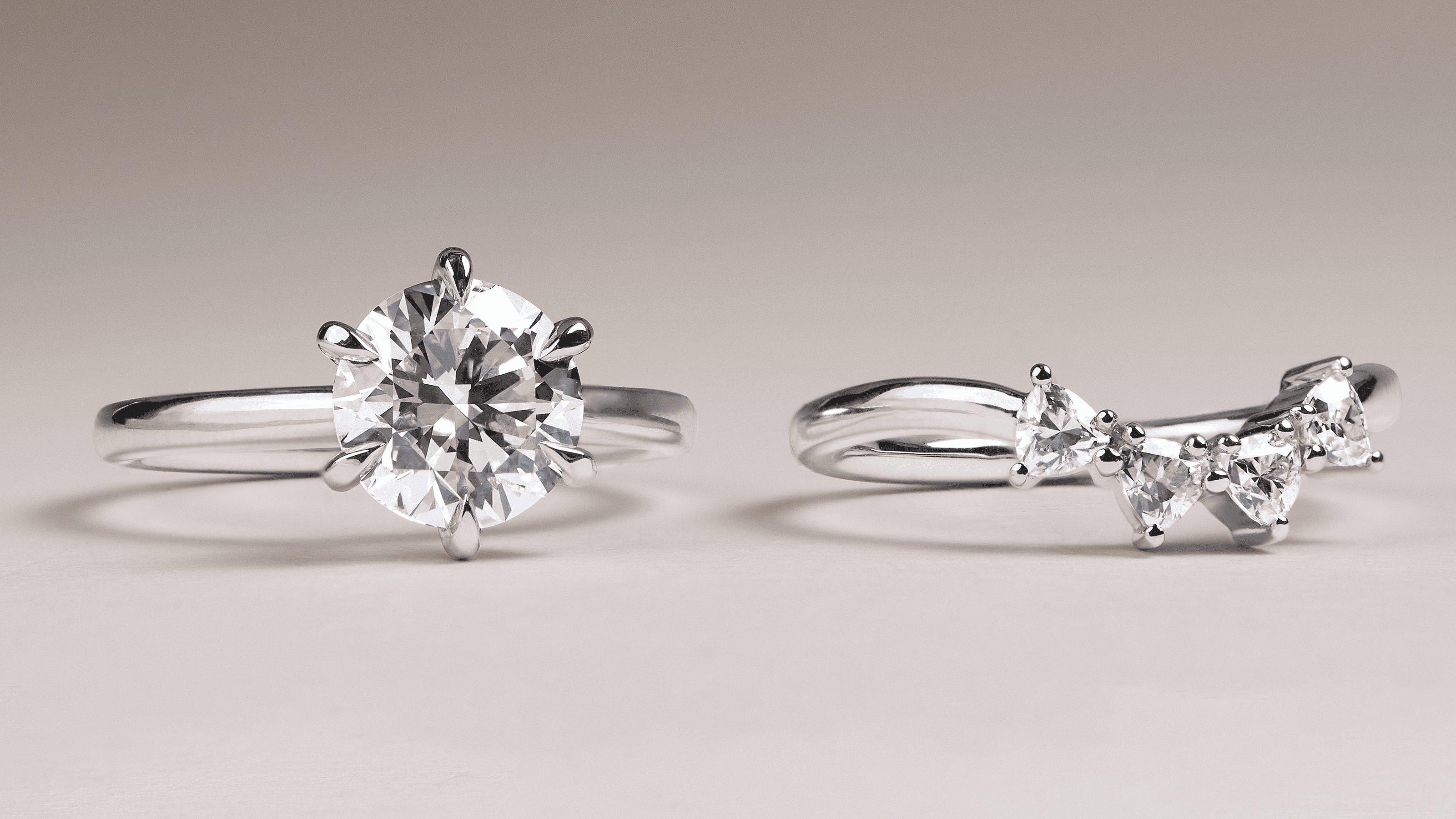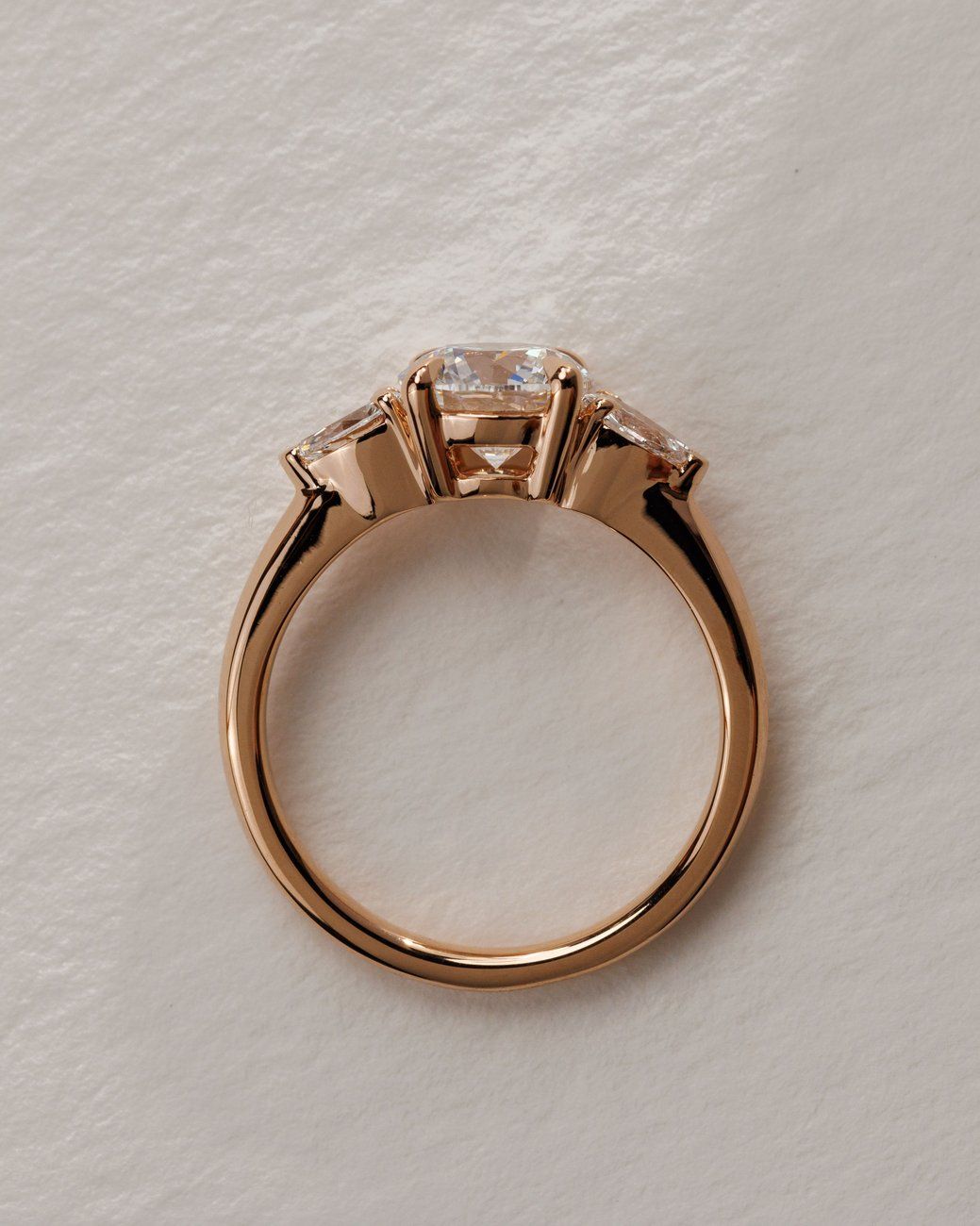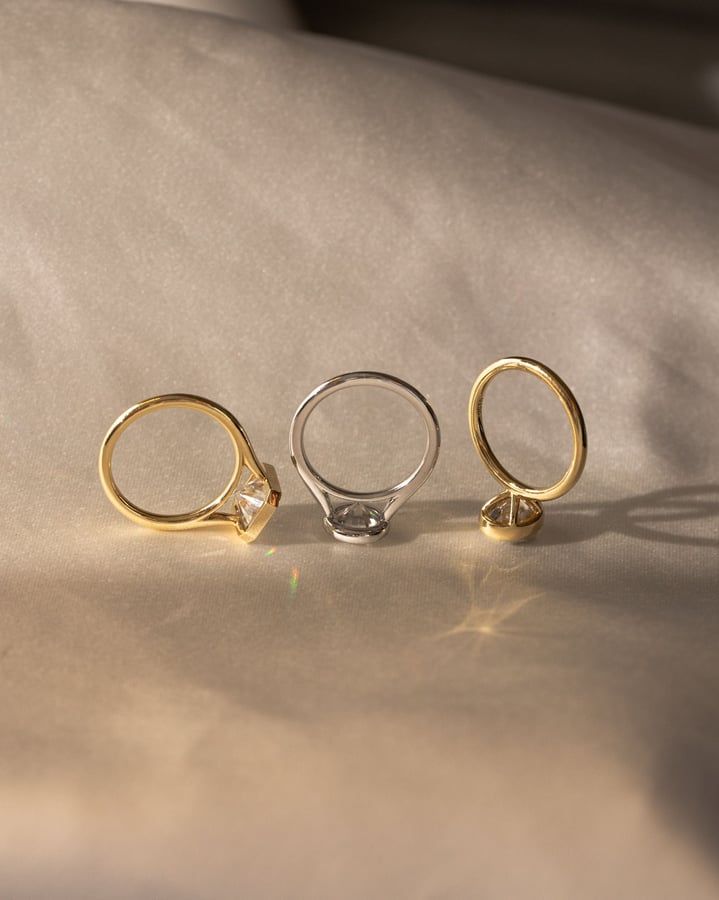
The perfect ring starts with the perfect foundation. Explore how different precious metals bring their own character – warmth, strength, and meaning – to your forever piece. Every gemstone needs a stage, and the metal you choose sets the scene. Whether you’re drawn to the warmth of yellow gold, the sleekness of platinum, or something unexpected, your choice shapes not just the look of your ring, but how it lives with you every day.
Platinum: strength in simplicity
Timeless and quietly powerful, platinum is known for its natural white shine and incredible strength. It’s hypoallergenic, won’t tarnish, and feels reassuringly weighty – a fitting choice for a symbol meant to last forever. Platinum’s density and durability make it ideal for everyday wear, and it’s particularly suited for those who prefer low-maintenance elegance. Think of it as the strong, silent type: refined, enduring, and built to stand the test of time.
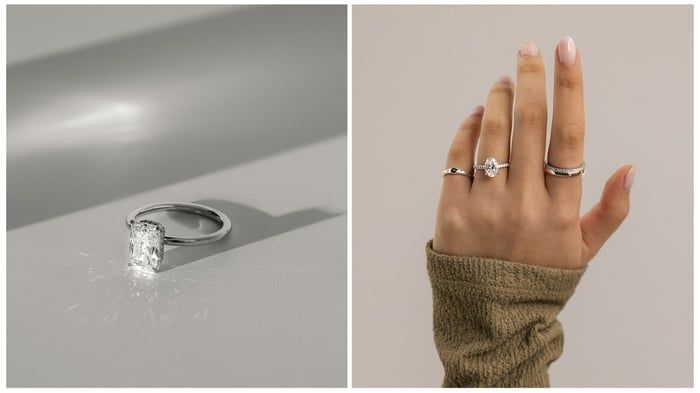
18k yellow gold: the classic romantic
Rich, warm, and glowing – yellow gold has been the metal of love for centuries, and for good reason. It’s 75% pure gold, strengthened with a touch of alloy for everyday wear. Its beautiful, buttery appearance never goes out of style, and its warmth feels like nostalgia in physical form. Unlike 14k gold, 18k gold offers a richer lustre, greater durability, and lower chances of corrosion, making it ideal for engagement rings meant to last a lifetime.
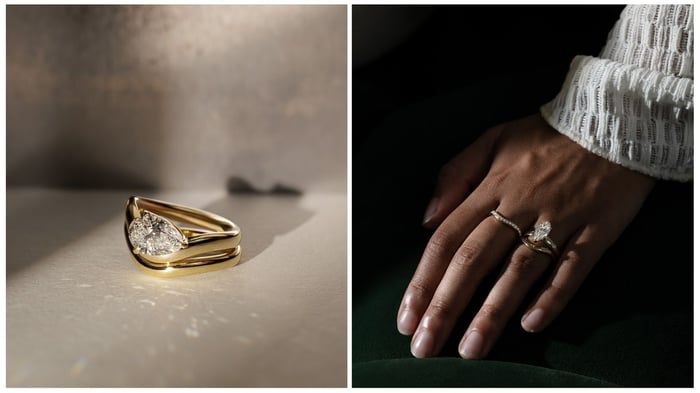
18k rose gold: a modern classic
For those who love a touch of individuality, rose gold brings romance with a twist. Its soft blush tone comes from gold alloyed with copper, giving it strength and a distinctive glow. It’s flattering on most skin tones, radiates warmth, and is more affordable than platinum. A practical note: rose gold’s copper content means it may not be the best option for anyone with a metal allergy – in that case, pure or yellow gold is a safer bet.
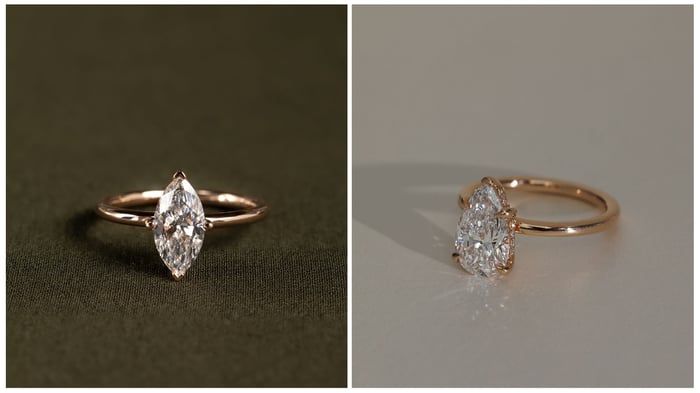
18k white gold: understated elegance
White gold offers a bright, silvery finish similar to platinum but at a more approachable price. Rhodium-plated for luminous sheen, it may need replating over time to maintain its polish. White gold is ideal for those who love modern elegance and a cool-toned look but don’t want the density or cost of platinum.
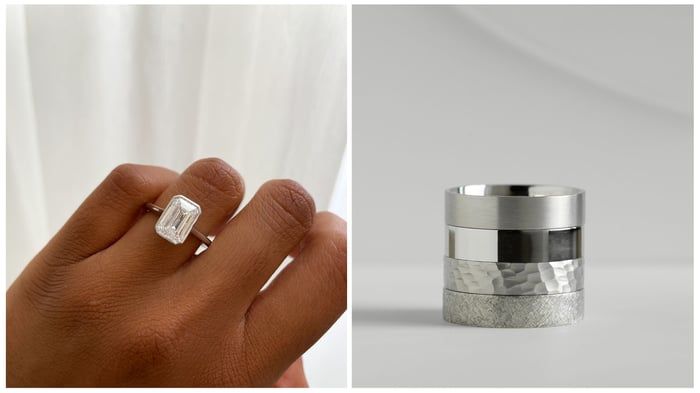
Two-tone: the best of both worlds
Can’t decide? You don’t have to. Two-tone rings combine metals – for example, a platinum setting paired with a yellow gold band – to create contrast and character. It’s a thoughtful choice for couples who like a bit of balance: tradition with a hint of surprise.
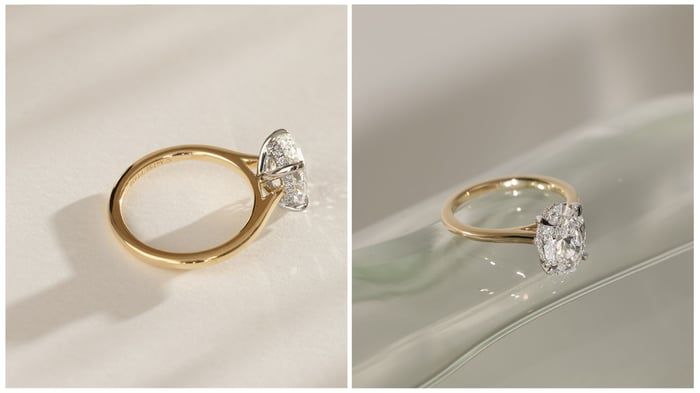
The metal behind the magic
The precious metal you choose does more than hold your gemstone – it shapes how your ring lives with you every day. It becomes part of your daily rhythm, a meaningful detail that carries both style and story. With the right choice, it can feel effortless, familiar, and completely yours.
Schedule an in-person or virtual consultation with Cullen to explore your options and bring your vision to life.
